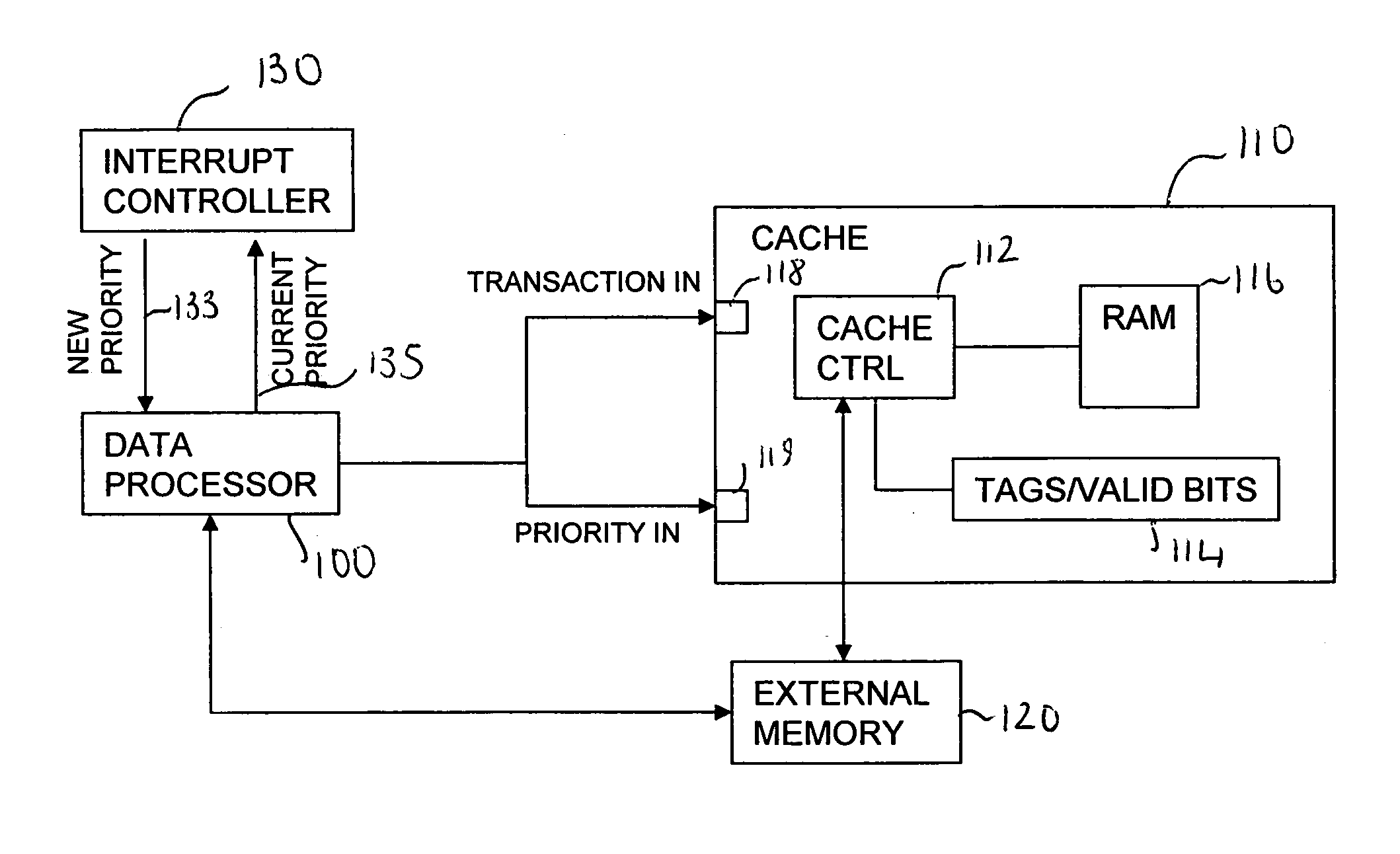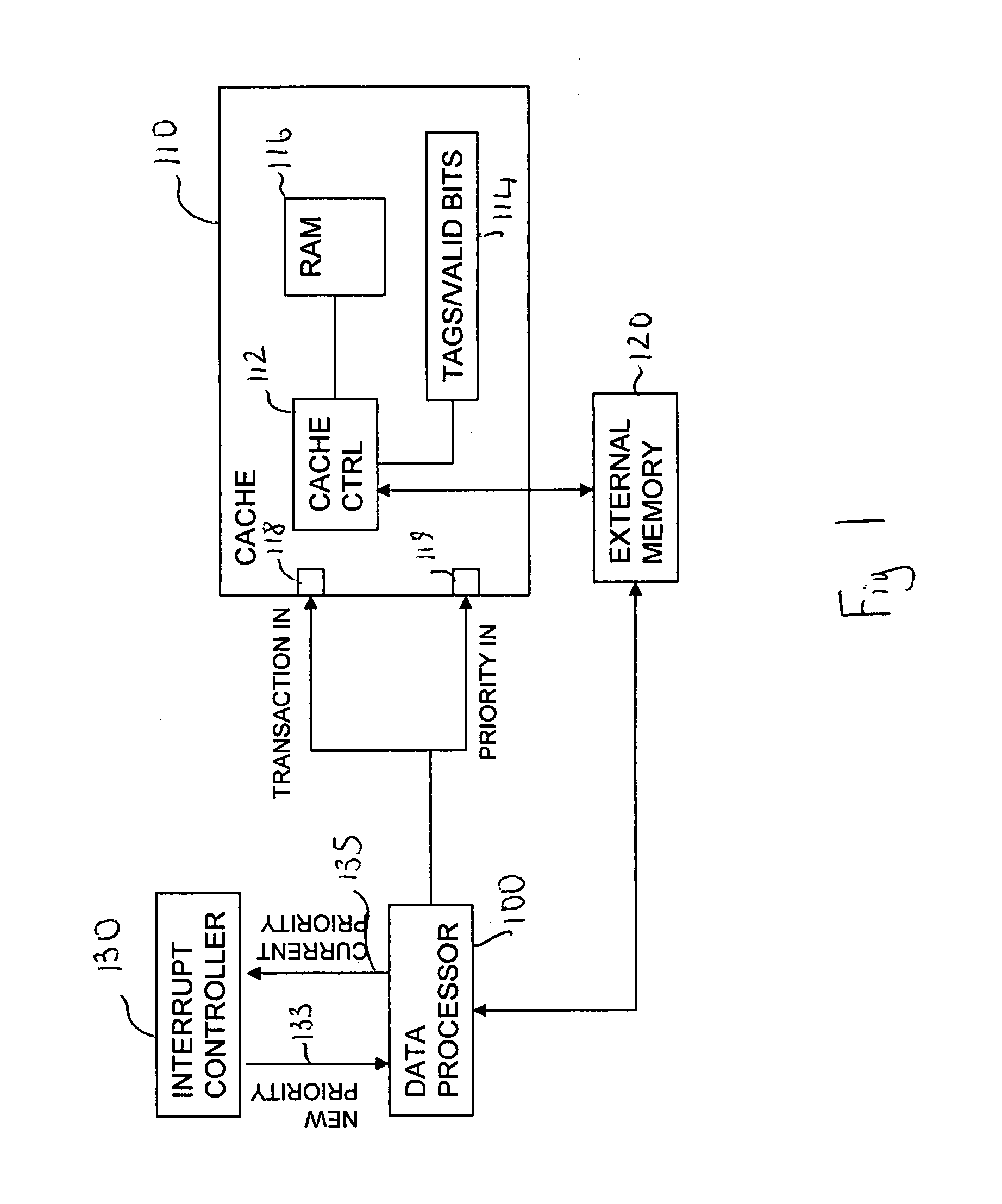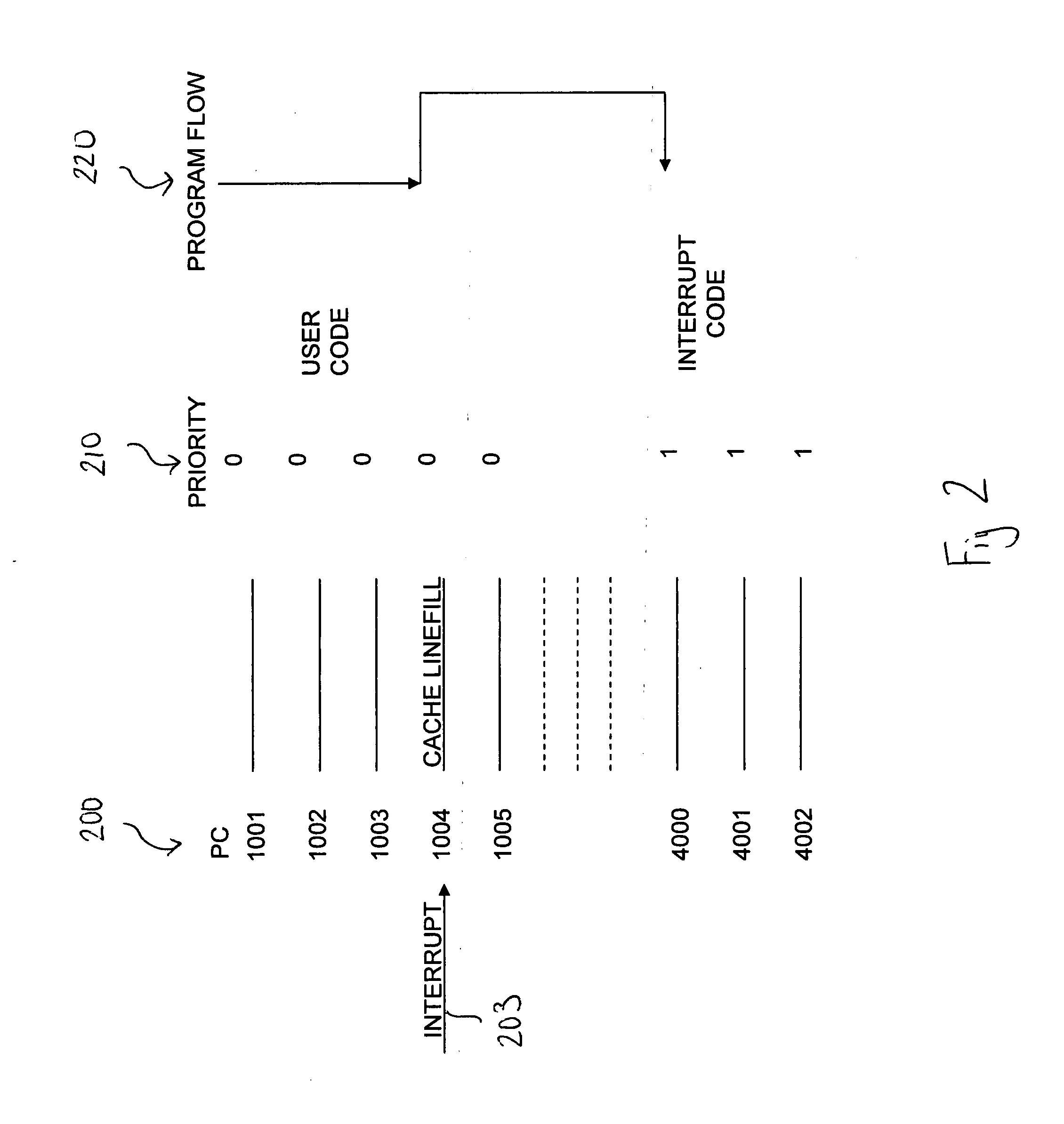Control of cache transactions
a technology of cache transactions and transactions, applied in the field of cache memory, can solve the problems of difficult to predict the time it will take to complete these cache line fillings, the entire line of cache data retrieval can take many processing cycles, and the latency can arise, so as to achieve higher priority transactions, reduce latency, and perform more efficiently
- Summary
- Abstract
- Description
- Claims
- Application Information
AI Technical Summary
Benefits of technology
Problems solved by technology
Method used
Image
Examples
Embodiment Construction
[0061]FIG. 1 schematically illustrates the data processing system comprising a cache that is responsive to a priority input signal. The data processing system comprises: a data processor 100; a cache 110 comprising a cache controller 112; a cache tag repository 114; a cache memory array 116; a transaction input port 118; a priority input port 119; an external memory 120; and an interrupt controller 130.
[0062]The cache controller 112 receives a plurality of cache translations for servicing via the translation input 118. The cache controller controls servicing of received cache transactions and makes use of the tag repository 114 to determine whether or not data requested by the data processor 100 is currently stored within the cache memory 116.
[0063]The cache transactions are associated with instructions being executed by the data processor 100. If the cache controller finds an entry in the cache memory 116 with a tag matching the address of the data item requested by the data proces...
PUM
 Login to View More
Login to View More Abstract
Description
Claims
Application Information
 Login to View More
Login to View More - R&D
- Intellectual Property
- Life Sciences
- Materials
- Tech Scout
- Unparalleled Data Quality
- Higher Quality Content
- 60% Fewer Hallucinations
Browse by: Latest US Patents, China's latest patents, Technical Efficacy Thesaurus, Application Domain, Technology Topic, Popular Technical Reports.
© 2025 PatSnap. All rights reserved.Legal|Privacy policy|Modern Slavery Act Transparency Statement|Sitemap|About US| Contact US: help@patsnap.com



